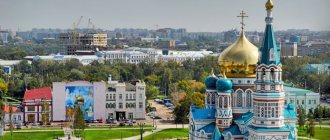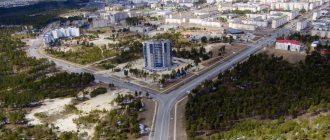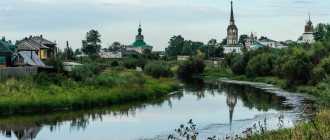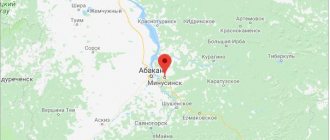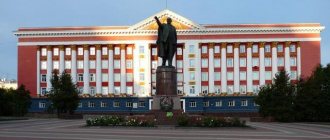| Torzhok |
Torzhok
, a city in Russia, the administrative center of the Torzhok district of the Tver region, within the Tver diocese. Located on the banks of the Tvertsa River, a tributary of the Volga, 60 km northwest of Tver, on the Moscow-St. Petersburg highway. A branch of the Oktyabrskaya Railway to Rzhev, Likhoslavl, Ostashkov passes through the city. Population: 46,031 people (2017).
- On the map: Yandex.Map, Google map
Torzhok is one of the oldest cities in the Upper Volga region.
It is one of 116 Russian cities whose historical and architectural centers have been declared protected areas. The territory of the city is a unique complex of architectural and archaeological monuments. In terms of the number of monuments, Torzhok surpasses all cities of the Tver region (292 objects, including 92 monuments of federal significance, 102 of regional significance and 98 newly identified objects). The total area of the medieval cultural layer is 150 hectares. The city was first mentioned in the chronicle of 1139, but it apparently arose back in the centuries. In the “Topographic and Historical Description of the City of Torzhok in 1783-1784” the time of the city’s foundation is stated:
“The time when and by whom the city of Torzhok was founded, although it is impossible to accurately determine, its antiquity is confirmed by reliable incidents, for the founder of the Boris and Gleb Monastery located in Torzhok, the Reverend Father Ephraim, lived at the beginning of the 11th century and was in the service of the Grand Dukes of Russia Boris and Gleb; After they were killed in 1015, intending to spend the rest of his life in solitude, he came to this city, which at that time was already crowded, and Saint Ephraim was then appointed Archimandrite of the Boris and Gleb Monastery.”
.
On the right bank of the Tvertsa River, in the 12th century, a trade and craft settlement of the Novgorod Slavs was formed - Novy Torg
.
Subsequently, the city began to be called Torzhok
. The presence of a waterway, convenient location, and the development of trade and crafts contributed to the growth of the city.
In the 14th century, the entire city within the cape between the Tvertsa River and its tributary the Zdorovets stream was surrounded by wooden walls with towers, and on the southern side it was protected by a high earthen rampart and a ditch. This is how the Torzhok Kremlin was formed. On its territory there was a wooden temple and a veche square. In 1364, on the site of the wooden cathedral, a stone one was built, which in 1822 was replaced by the five-domed Transfiguration Cathedral, built according to the design of the famous architect C. Rossi. The Torzhok Kremlin was at one time a significant fortress that withstood long sieges. So, in 1238, the Novotors held back the hordes of Batu Khan for two weeks. More than once the Novgorod princes took refuge behind the walls of the Torzhok Kremlin.
During the internecine war in 1372 between Prince Mikhail Alexandrovich of Tver and Grand Duke Dmitry Ivanovich Donskoy, Torzhok suffered the greatest devastation, was practically reduced to ashes, and some of the inhabitants were chopped down and drowned in Tvertsa, and the rest were taken to Tver and settled in a special settlement.
In 1478, republican rule was abolished in the city, the city was annexed to Moscow and began to be governed by royal governors from the boyars. The city continues to grow. The Kremlin is surrounded by trade and craft areas. The urban area also extends to the left bank of the Tvertsa.
The role of the city as an important trading point on Tvertsa especially increased under Peter I, when the Vyshnevolotsk water system, which included the Tvertsa River, was built to transport goods to St. Petersburg under construction. The city and its district supplied grain, flour, hemp, leather, and building materials to the new capital. At the same time, Torzhok was one of the most important postal stations on the “sovereign road”.
Since 1708 - as part of the Ingermanland province (from 1710 - St. Petersburg), since 1719 - Tver province. Since 1727 - as part of the same province in the Novgorod province. Since 1775 - the district center of the Tver governorship (since 1796 - the Tver province).
| Torzhok. View from the west. Tvertsa River. Summer 1910. Photo by S. M. Prokudin-Gorsky from the site prokudin-gorskiy.ru |
In 1781, the general plan of the city was approved, which was the main construction document for a century and a half.
During this period, many stone buildings were built in the center of Torzhok. Experts call the second half of the 18th - first half of the 19th centuries the “golden age” of Torzhok, which transformed the face of the city. Nikitin, Kazakov, Lvov, Rossi and other outstanding architects worked on its architectural appearance. Then new administrative complexes, shopping arcades, and many stone residential buildings of nobles and merchants appeared in the city. In place of the old ones, new cathedrals and churches were erected, and the remaining churches were rebuilt. Of course, with such a large-scale construction, the old architecture of Torzhok could not help but suffer, but it was replaced by a complex, artistically completed urban ensemble in the unified style of classicism. It is thanks to this that modern Torzhok is considered an example of Russian urban planning art of the 18th-19th centuries.
.
In 1856, in the county town of Torzhok, Tver province, there were 27 churches, 2,234 houses, 394 shops.
Since the beginning of the 19th century, leather, shoe, and blacksmithing industries have developed. At the end of the 19th century, a school of gold embroidery arose on the basis of artels of gold seamstresses.
With the beginning of the construction of railways, shipping along the Vyshnevolotsk system began to decline, and the economic life of the city froze.
By 1917, Torzhok had turned into a provincial merchant city.
At the beginning of the 21st century, the city has a carriage building plant, a printing ink plant, a shoe factory, and woodworking and food industry enterprises. The school of artistic embroidery and the gold embroidery factory (lace embroidery with gold, silver and silk on morocco and velvet) are famous. An ancient folk craft - a clay toy - has been revived.
Statistics
- 1856 - 10.2 thousand people
- 1913 - 14 thousand people
- 1931 - 17 thousand people
- 1967 - 43 thousand people
- 1992 - 50.2 thousand people
- 2006 - 48.2 thousand people
general review
The city is located in the foothills of the Valdai Hills, the European part of Russia, on high hills along the two banks of the Tvertsa River, a left tributary of the Volga. Torzhok forms an urban district and is the administrative center of the Torzhok district. The area of the city of Torzhok occupies 58.8 km². The average altitude above sea level is 165 m. In the southeast, 64 kilometers away is the regional center of Tver, and Moscow is 239 kilometers away. The Rossiya highway connecting Moscow and St. Petersburg runs nearby. The city has the Torzhok railway station. The official name of the population of Torzhok: men - novotor, women - novotorka, townspeople - novotortsy.
The city's territory is located in the temperate continental climate zone. The average temperature of the coldest month, January, is minus 8.5-10.5 degrees, the hottest, July, is plus 17 °C. The average annual precipitation is 550-750 mm.
The city has a fairly developed industry; there are 25 large and medium-sized enterprises. About 70% of industrial products are produced by the Torzhok Printing Inks Plant and the Torzhok Freight Car Building Plant. A large enterprise in the electronics industry is. Several enterprises were built by foreign investors, including the Royal Dutch Shell lubricants plant and the Schiedel chimney and ventilation systems plant.
Torzhok Museums:
Pushkin Museum Torzhok
Considering the fact that A.S. Pushkin passed through Torzhok 27 times and stayed at the house of his friends, the Olenin family, on Dzerzhinskaya Street, where the poet’s literary and memorial museum has been operating there since 1972. The exhibition is located in seven halls in such a way that visitors can take a virtual trip with Pushkin from St. Petersburg to Moscow. Here is a map of the postal road, built in 1834, along which the poet traveled. Fans of Pushkin's poetry can familiarize themselves with the drawings of postal stations of those times. In one of the halls there are originals of things from which one can imagine the life and life of the coachmen and guides who accompanied the poet.
Of great interest is the original document that was required for the trip - the “travel document”. It was issued to Alexander Sergeevich in 1828, which states that Pushkin, as a collegiate secretary (10th grade official), was required to have three horses, a coachman and a guide.
Village-cemetery of Prutnya
The name of Pushkin is associated with a settlement in the Torzhok region - the village of Prutnya (5 km from Torzhok). In the 18th century it was called the Prutnya churchyard. In those days, a graveyard was an area with a church and an adjacent cemetery. Here is the grave of Alexander Sergeevich’s beloved, Anna Petrovna Kern. The Russian poet was fascinated by the beauty of this noblewoman, and in 1825 he dedicated one of his best poems, “I Remember a Wonderful Moment,” to her. Later, composer Mikhail Glinka composed a romance based on these verses in honor of Kern’s daughter, Katerina. Kern's second husband was Alexander Markov-Vinogradsky, who together with his wife often visited the Pryamukhino estate not far from Torzhok. In 1877, the modest St. Petersburg official died and was buried there. Two years later, Anna Petrovna died in Moscow. Before her death, she asked to be buried next to her beloved husband. The coffin with her body was brought to Torzhok. The May rains washed out the road to Markov's sister's estate, and therefore it was decided to bury Kern in the Prutnya churchyard. In 1918, her grave was destroyed by peasants, and its exact location is still unknown.
Now tourists can visit the symbolic grave located near the Church of the Resurrection of Christ, where there are always fresh flowers from fans of the poetry of the great Russian poet, thanks to whom Anna Petrovna Kern entered the history of Russia.
The center of Torzhok and the unique streets of Torzhok
Torzhok is unique primarily not for its individual attractions, but for its historical center. The historical center of the city includes the Boris and Glebov Monastery, the Cathedral of the Annunciation and the Old Ascension Church. However, the most valuable thing is the general plan, the general historical development. In Torzhok, the general historical buildings of the 17th century have been preserved. Fortunately, it was not destroyed either by the Second World War or by the first reforms of the Bolsheviks. Torzhok is a great way to see what pre-Petrine Russia looked like. This is why thousands of tourists come to the city center all year round. Therefore, when driving somewhere nearby, for example, along the Leningradskoye Highway between St. Petersburg and Moscow, stop by Torzhok: a 3-4 hour walk along the most beautiful streets of the city will not only inspire you, but will also allow you to feel the atmosphere of ancient Rus'.
Story
The exact date of the city's foundation is unknown; it is believed that it was founded by Novgorod merchants around the beginning of the 11th century. The first reliable written mention, found in the Novgorod Chronicle, dates back to 1139. That year the city was captured by the Suzdal prince Yuri Dolgoruky. The name of the city comes from the word "bargaining". In ancient times, merchants from Russian principalities and foreign lands engaged in trade in this area. Since about the 12th century, the names of the settlement “Novy Torg” and “Torzhok” have been found in chronicles. The shorter name became established as the official one. At the same time, in modern toponomics such adjectives as Torzhsky, Novotorzhsky are used. The self-name of the townspeople, as already mentioned, remains - novotory.
In 1238, the population of the city of Torzhok resisted the Mongol troops of Batu Khan for two weeks. In 1478, Torzhok, together with the Novgorod land, was annexed to the Moscow Principality. In later times, the city was ravaged by both foreign and troops of neighboring principalities. In 1775, Torzhok became a district town of the Tver province. In the 19th century, the city had 21 factories, 29 churches and 10 schools. During Soviet times, monasteries and churches were demolished in Torzhok, and several industrial enterprises were built.
Sights of Torzhok
Torzhok has many interesting attractions, so it will be extremely comfortable to spend a weekend in this city. However, there is a small law - when going to Torzhok, take a camera with you. Or better yet, two at once! Torzhok is so beautiful that a memory card may not be enough for photos
